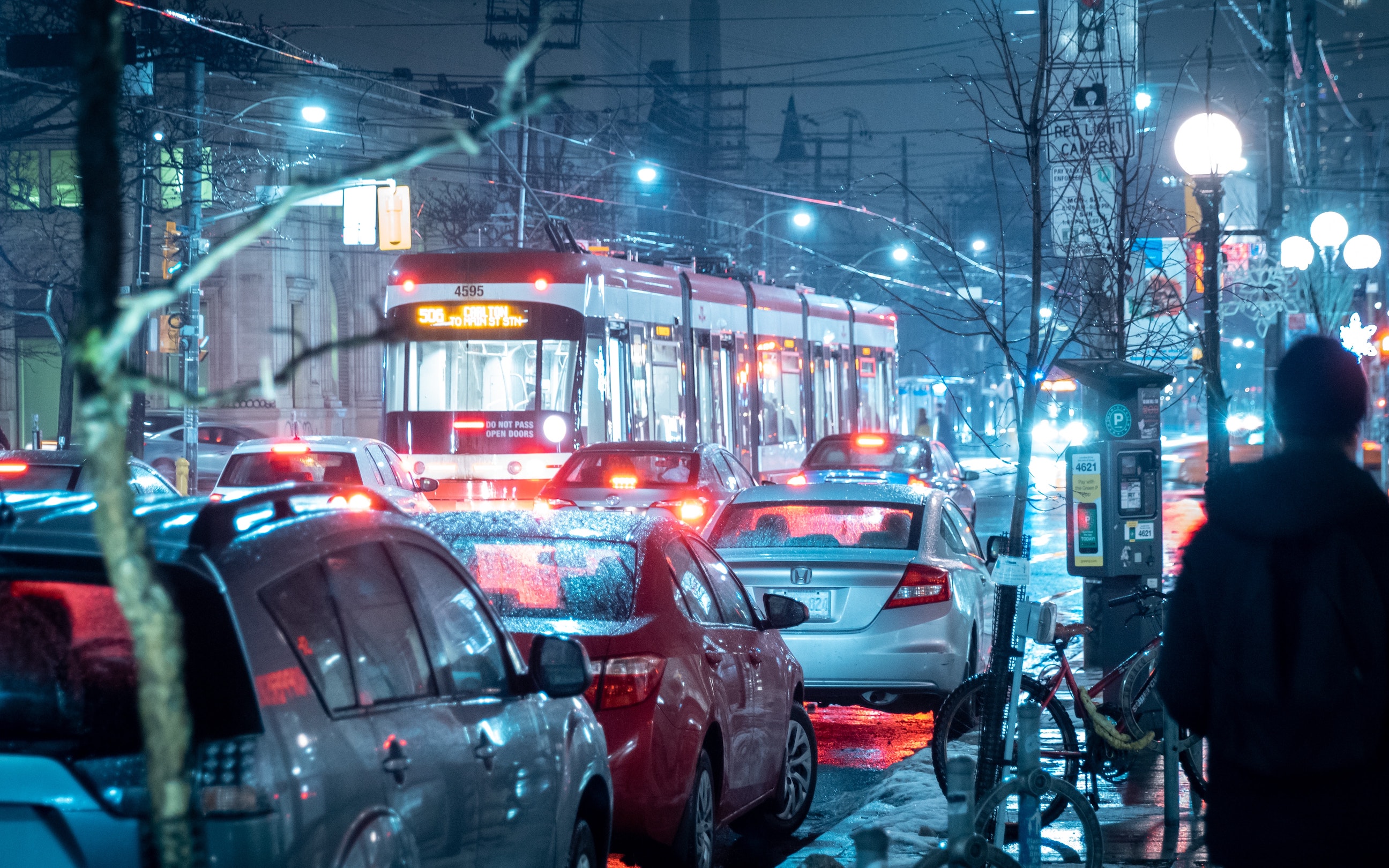In 2018, Elon Musk logged onto Twitter to share his ambition for the future of L.A. transit: a network of underground tunnels buzzing with electric self-driving Tesla cars. The system would have thousands of “small stations the size of a single parking space that take you very close to your destination and blend seamlessly into the fabric of a city,” he tweeted.
Critics inevitably rolled their eyes. “Every two or three weeks,” a commentator pointed out, “a tech guy accidentally invents the concept of a city bus.”
Yet public bus and train systems across North America are crumbling, while Tesla stocks have risen alongside the popularity of private ride-sharing apps. Between 2014 and 2017, bus ridership in the U.S. plummeted by 14 per cent. In New York alone, subway ridership dropped by almost 30 million rides between 2016 and 2017. In Washington, D.C., subway stations are literally catching on fire, and due to a lack of funding for maintenance, flames lick the tracks unattended until someone tweets about it.
James Wilt’s rousing first book, Do Androids Dream of Electric Cars? Public Transit in the Age of Google, Uber, and Elon Musk, maps out how we ended up in this situation and how we can get out of it. How have tech billionaires gotten a stranglehold on North America’s transportation options, pushing electric and autonomous ride-sharing as the only desirable future of mobility? And how can our society take the reins over our collective fate and gain public control of transit, with a view to building a renewed democratic, equitable, and low-carbon world?
Wilt’s central task is to dismantle what leading tech figures have touted as the inevitable “three revolutions” that will bring a new generation of cars: A proliferation of personal electric vehicles, then ride-hailing services, and eventually autonomous or self-driving vehicles.
These “three revolutions” are currently being sold as the inevitable way of the future and therefore used by austerity-minded politicians as an excuse to not invest in public transportation. The result, Wilt argues, is a reduced ability to plan transit for the public good. For example, a commissioner for Michigan’s Macomb County has argued that Detroit’s transit system should be replaced by ride-hailing subsidies for low-income residents. And in South Florida, many decisions not to fund public transit are already being made on the promise that autonomous ridesharing vehicles will soon arrive on the scene.
We know that autonomous vehicles, if they ever arrive, may be decades away. Yet Wilt documents how many elected officials and decision-makers talk about them like they’ll be on the roads tomorrow, as if that means we should rip up traditional transit systems.
Wilt argues that the supposed affordances of the “three revolutions” fall apart under scrutiny. Take the case of transit and the climate crisis. Electric vehicles, promoters say, will reduce greenhouse gas emissions, and sharing vehicles means fewer cars can transport more people. Autonomous technologies promise to nearly eliminate the need for parking spaces, opening up large portions of cities and towns for densified redevelopment that cuts down on the need for motor vehicle travel.
This is a promising vision, but according to Wilt it is built on fabrications. Given the incredible lobbying powers of private industry and its ability to dissolve regulation, the chances of best-case conditions are slim, and Do Androids Dream documents the historical evidence we have to be suspicious.
Even in its current underfunded state, transit remains far less polluting on a per-passenger basis than personal automobiles. It takes an estimated 100 personal electric vehicles, for example, to achieve the same “environmental relief” that a single sixty-foot electric bus provides. Thus a billion Teslas will not solve climate change, Wilt contends. Each of those cars has an enormous carbon footprint from the components mined from the earth and the energy-intensive processes needed to create it.
Beyond climate, Wilt dissects the empty promises for increased equality, safety, accessibility, privacy,and rural connectivity. He makes a convincing case for how how the “three revolutions” will only bring worsened inequality, more sprawl, dangerous streets, and even less accessibility for seniors, people with disabilities, women, and trans and gender non-conforming people.
In every instance, Wilt provides reams of evidence that public options better serve the most marginalized members of our society at a lower cost. Solutions are no easy task, however, and are contingent on hard-won political commitment and funding, fought for by organized transit workers and riders.
Due to its rich detail and accessible writing, Wilt’s book should be of interest not only to transportation activists, but to anyone looking for the information necessary to resist more cars in cities, and to advocate for more free, reliable, accessible, and pleasurable public transportation.
In this world-historical moment, we have the opportunity to organize and radically re-think our cities to be more equitable, accessible, and low-carbon for all. Wilt’s book is a shining beacon in this regard, even if it was written before the arrival of COVID-19.
At first glance, it would seem that fewer people would be willing to take public transportation in the wake of this pandemic, as close quarters in packed train cars or buses might raise our chances of catching a virus. However, Wilt’s proposals for making public transport effective and democratic — more frequent, dependable service at low or no cost — might also lower chances of contagion, as crowds disperse into more and cleaner train cars and buses. Seattle, Los Angeles, and Denver have led the way, making municipal bus travel free to help essential workers and protect bus drivers (since riders can enter through back doors).
We will have to fight for this spirit to continue once the pandemic subsides.
Malcolm Araros is a PhD student in sociology at New York University.
Image: Boden Deplaedt/Unsplash



